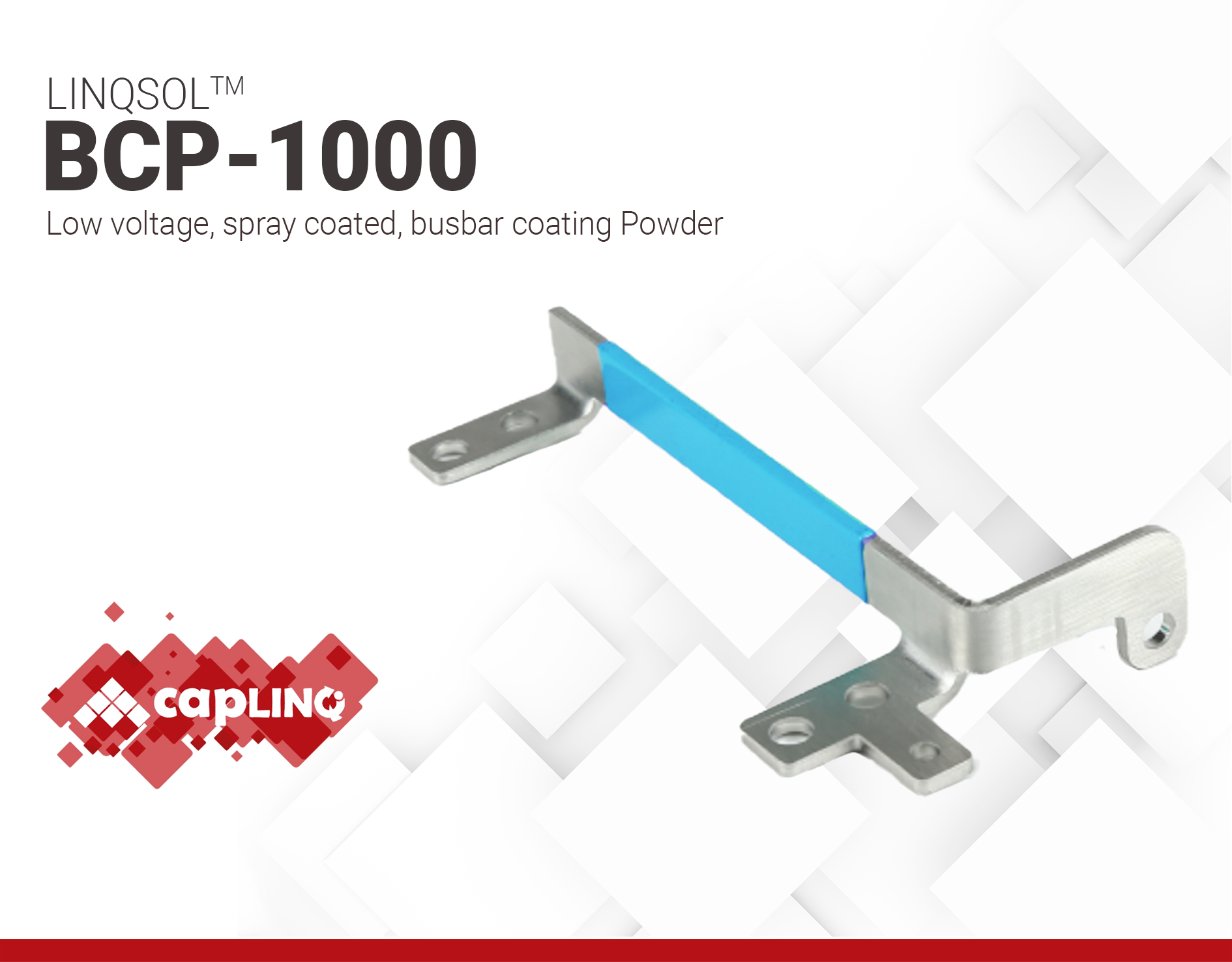BCP-1000 | Low voltage Coating Powder
- Blue Color
- Cost-efficient solution
- Spray coating
Product Description
LINQSOL BCP-1000 is a blue, busbar epoxy coating powder. This halogen free material offers good adhesion, good heat and moisture resistance, and good electrical insulation properties. It is widely applied in various low voltage busbar applications (<600V) as an insulation and moisture-proof protective layer.
LINQSOL BCP-1000 exhibits excellent resistance to heat vibration and mechanical shock. Its excellent adhesion to copper, allows it to eliminate the air gap between busbar and insulation layer and to avoid potential safety hazards. This coating powder's excellent thermal conductivity, can transfer away the heat released by the busbar in time, and increase the service life of the busbar. Finally it is environmentally friendly with flame retardant properties and complies with RoHS directive requirements.
This busbar insulation epoxy powder allows high production efficiency thanks to its fast curing characteristics. It is strongly recommend for electrostatic spraying (60-80KV) coating. It owns the best cost-performance ratio.
Recommended Curing Temperature:
- 200 °C x 15 min
Technical Specifications
| General Properties | |||||
| Chemistry Type | Epoxy | ||||
| Color Color The color | Blue | ||||
| Process Method | Fluidized Bed or Electrostatic Spray | ||||
| Specific Gravity Specific Gravity Specific gravity (SG) is the ratio of the density of a substance to the density of a reference substance; equivalently, it is the ratio of the mass of a substance to the mass of a reference substance for the same given volume. For liquids, the reference substance is almost always water (1), while for gases, it is air (1.18) at room temperature. Specific gravity is unitless. | 1.45 | ||||
| |||||
| Electrical Properties | |||||
| |||||
| Volume Resistivity Volume Resistivity Volume resistivity, also called volume resistance, bulk resistance or bulk resistivity is a thickness dependent measurement of the resistivity of a material perpendicular to the plane of the surface. | 3.7x1015 Ohms⋅cm | ||||
| Thermal Properties | |||||
| UL 94 Rating UL 94 Rating Flammability rating classification. It determines how fast a material burns or extinguishes once it is ignited. HB: slow burning on a horizontal specimen; burning rate less than 76 mm/min for thickness less than 3 mm or burning stops before 100 mm V-2: burning stops within 30 seconds on a vertical specimen; drips of flaming particles are allowed. V-1: burning stops within 30 seconds on a vertical specimen; drips of particles allowed as long as they are not inflamed. V-0: burning stops within 10 seconds on a vertical specimen; drips of particles allowed as long as they are not inflamed. 5VB: burning stops within 60 seconds on a vertical specimen; no drips allowed; plaque specimens may develop a hole. 5VA: burning stops within 60 seconds on a vertical specimen; no drips allowed; plaque specimens may not develop a hole | V0 | ||||
| Other Properties | |||||
| RoHS Compliant RoHS Compliant RoHS is a product level compliance based on a European Union Directive which restricts the Use of certain Hazardous Substances in Electrical and Electronic Equipment (RoHS). Products compliant with this directive do not exceed the allowable amounts of the following restricted materials: lead, mercury, cadmium, hexavalent chromium, polybrominated biphenyls (PBB) and polybrominated diphenyl ethers (PBDE), with some limited exemptions | Yes | ||||
Additional Information
Storage
Store in a ventilated, dry, and clean environment below 25°C. Keep away from fire and heat sources. It is strictly forbidden to store in outdoor environments. At proper storage conditions, the product has a shelf life of 6 months.
Precautions
- Avoid long-term skin contact. Powder that touched the skin should be rinsed off quickly.
- During operation dust-proof masks should be used to avoid inhalation.
- Keep the oven temperature stable, so as not to affect the colour and quality of the coating due to excessive temperature deviation.
- The concentration of dust should be controlled within a safe range to avoid malfunction of the coating equipment.



